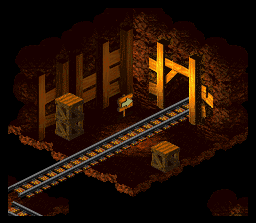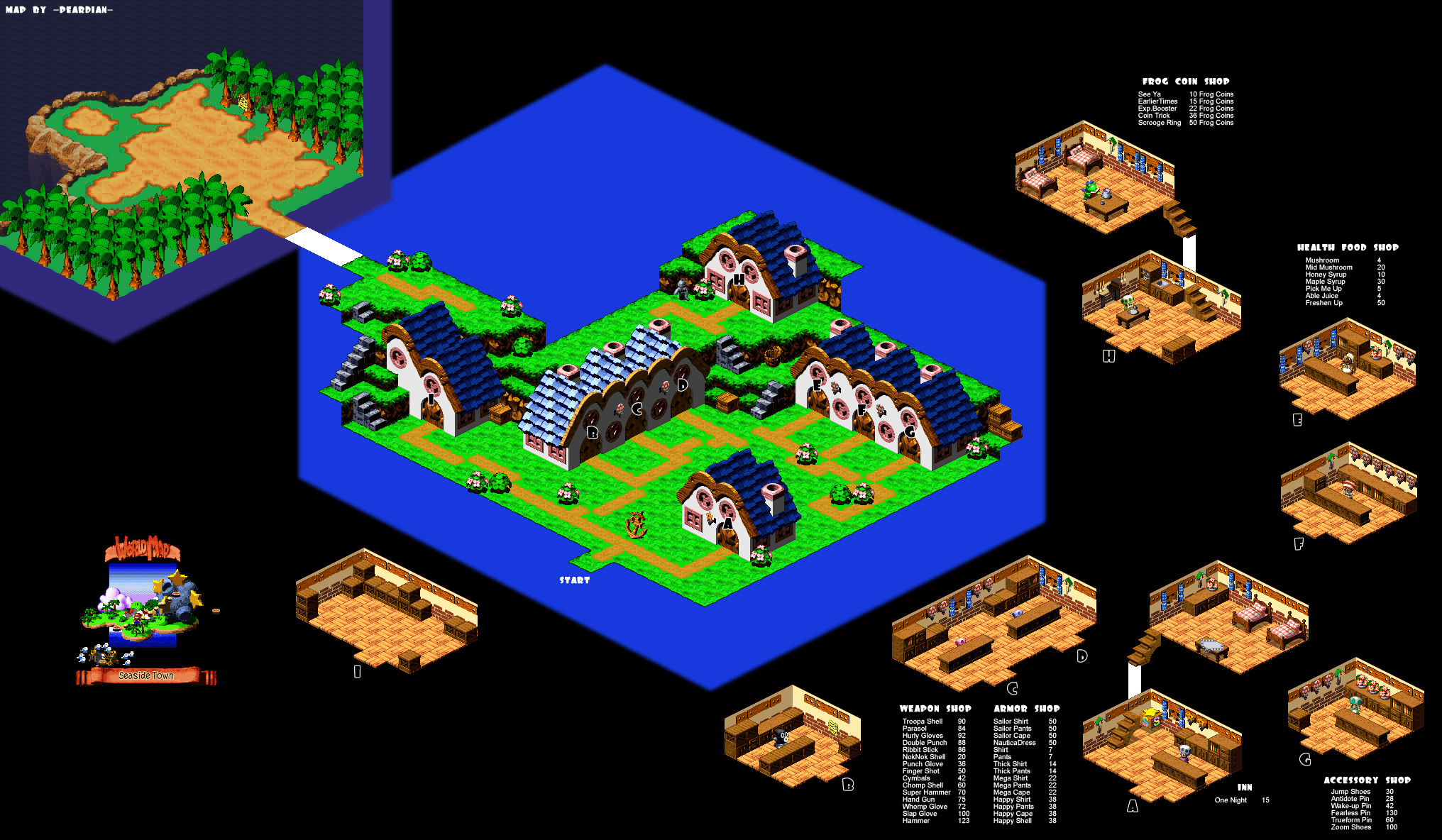
Nintendo and Square would eventually collaborate again, starting with Mario Hoops 3-on-3 on the Nintendo DS.ĭue to licensing problems, very few of the characters that made their debut in this game have recurred in later Mario games, including fan-favorite Geno.
#Super mario rpg moleville mines secret treasure series
Nintendo would take these themes and run with them, producing a series of pseudo-sequels without Square's involvement, Paper Mario and Mario & Luigi, though the latter series would have involvement from both SMRPG directors and composer. This would also be the first Mario game to feature extensive storytelling and characterization, and introduced the concept of Bowser being portrayed as a more complex and potentially sympathetic character. Mario has no speaking role (because he's the silent RPG protagonist), so he has to act out all of his "lines" in mime (including doing an impression of Bowser). The game was one of the first to engage in a full-on Lampshade Hanging frenzy regarding the tropes of both the Mario series and Square's own RPGs. With the help of his companions (including, for the first time, Bowser), Mario sets off to smash the Smithy Gang and save the world. Unless the Star Road can be repaired by finding and re-assembling the seven Star Pieces, no wishes will ever come true again. which grants the wishes of everyone in Mario's world. Soon afterwards, a messenger from the stars named Geno (or rather, " ♡♪!?") informs us that the blade also shattered the Star Road, note Last seen in Super Mario World as a hidden 8th World. It was also a Trope Codifier of Mascot RPG spin-offs for video game franchises that you wouldn't think would lend themselves to a Role-Playing Game format.ĭuring a routine princess-saving by Mario, a mechanical menace named Smithy takes over Bowser's Keep. It was famously developed by Square and published by Nintendo in 1996 for the SNES. Super Mario RPG: Legend of the Seven Stars is Exactly What It Says on the Tin: it is the first Eastern RPG to be developed under the Mario banner.


The house even has a robe as well as a desk with workshop tools. In the remake, Mario's House has some accessories referencing some of his other appearances, such as Mario's Builder Outfit from Super Mario Maker, a Wii Wheel and a Gold Trophy both from the Mario Kart series, a red Tennis racket from the Mario Tennis series, a few photos of Princess Peach, a Shroob invasion, and several others. Mario then rushed out to see the trouble. The Toad ended up entering the shower while Mario is still inside and ran out and slammed into the wall and knocked himself out. However, Luigi was busy hanging clothes outside so the Toad headed inside to find Mario instead. Mario's House also appeared in Mario & Luigi: Superstar Saga where a Toad is trying to alert to Mario and Luigi that " Princess Peach" was in trouble. Other than the bed, the functions of the pad are merely for entertainment purposes only. Outside of the pare various bushes, a tree, and a mailbox in which is the trigger to each adventure in the Paper Mario games. When in the room, Mario can read entries of Luigi's secret diary, with new entries after each chapter. The entrance to the secret room is an uncanny floorboard in the bedroom that can be accessed via a Tornado jump. Here, Mario can sleep to regain health, of check mail sent to him throughout the duration of the game.


The bedroom consists of a bunk bed (with red and green blankets) and a mailbox. The dining area consists of a stove, a table, a shelf displaying red and green mugs, and a chalkboard the display's Mario's records in the game. The pad itself consists of three rooms: a dining area of some sort, a bedroom, and a secret room that contains Luigi's diary. The pad is only truly accessible in the first game, while in the others it is merely shown. House, where both brothers are occupying at the time. In every game of the Paper Mario series (except for Paper Mario: Sticker Star) the opening scene begins at the Mario Bros. Mario Golf: Super Rush Review - Leisurely ChaosĢ4 June 2021 In the Paper Mario series


 0 kommentar(er)
0 kommentar(er)
